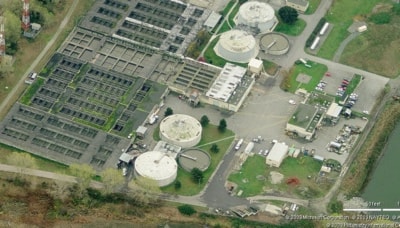Taxpayers from all over Metro Vancouver may be forced to help pay a huge bill to rebuild the sewage treatment plants that serve Vancouver and the North Shore.
Those cities are supposed to cover more than half of the expected $1.4-billion cost of upgrading the Lions Gate and Iona sewage treatment plants that serve their residents.
But Metro Vancouver chief financial officer Jim Rusnak told a recent budget meeting the region may change the existing formula to create a single sewerage area – effectively making all areas pay equally for the upgrades to secondary treatment.
That would soften the hit to taxpayers in Vancouver, North Vancouver and West Vancouver but make property owners everywhere else pay more.
Surrey Coun. Marvin Hunt warns it could jack annual sewage fees by perhaps $200 per home in areas like Surrey, Langley and the northeast sector.
"It's just not fair," Hunt said, adding he hopes an internal review by regional administrators will torpedo the idea.
"Otherwise you will hear an awful lot of screaming from South of the Fraser and it will be a very uncomfortable process at Metro."
Hunt said the North Shore is understandably alarmed about the sewer upgrade bill, which threatens to add $1,000 to the annual fees each household pays unless Ottawa and Victoria step in with big cost-sharing grants.
But he said the current formula set in 1996 forced areas like Surrey – which uses Metro's Annacis Island treatment plant – to pay the bulk of the costs when Annacis was upgraded.
"If it was fair then, it's fair now," Hunt said of the formula. "The guys who are hurting are screaming. The rest of us are saying 'What's the problem? You made us pay for it – yell at the federal government.'"
Even with no change in the formula, around 45 per cent of the upgrade cost would be spread across the region. As a result, sewer bills are projected to climb as much as 300 per cent over the next 20 years in areas like Surrey, Coquitlam and Maple Ridge.
North Vancouver City Mayor Darrell Mussatto is pressing the province and the federal government to each shoulder one third of the costs.
But he doubts the Metro cost-sharing formula can be rejigged to force non-benefitting cities to pay more.
"I don't think that's going to fly," Mussatto said. "They had to pay a lot for theirs. We can't now say they should pay for ours as well. We can't change the rules half way through the game."
But he said the debate underscores how critical the issue is for taxpayers.
"This is a huge cost driver for the region," he said, adding there's so far no guarantee Metro will get any grants.
Mussatto has proposed Metro delay up to $12 million in design work set to start next year for the Lions Gate plant in hopes Ottawa and Victoria might stump up some money for that initial phase.
Metro must choose next year whether to build a bare bones Lions Gate replacement or spend even more for one that's more environmentally advanced.
Getting senior government grants may depend on the new plant being built as a public-private partnership.
The region's new Integrated Liquid Waste and Resource Management Plan also commits Metro to treat sewage as more of a resource, from which nutrients, energy and water should be reclaimed.
The plan requires Metro rebuild the Lions Gate sewage plant by 2020 and its Iona plant by 2030, ensuring more advanced secondary treatment of sewage now discharged to the ocean with only basic treatment.
New federal and provincial regulations also require the upgrades to reduce pollution.
Environmental groups have repeatedly alleged Iona and Lions Gate effluent kills fish, in violation of the Fisheries Act.
Iona serves Vancouver, Sea Island and the northwest corner of Burnaby, while all other points east and south in the region are served by either the Annacis Island, Lulu Island or Northwest Langley treatment plants, all of which already use secondary treatment.

A move to a single sewerage area, eliminating the existing four, would make residents in the green-coloured Fraser Sewerage Area and the pink area in western Richmond contribute much more towards the $1.4-billion cost of rebuilding the Iona and Lions Gate plants that serve Vancouver and the North Shore.
